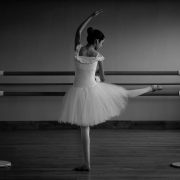Scoliosis: dance and swimming. Yes or no?
Is there any particular sport, rather than others, that individuals with scoliosis should choose?
Two Isico studies have addressed this question, and in so doing they have dispelled the misconception that dance and swimming have a negative impact on scoliosis curves.
The studies in question will be presented in Melbourne, Australia, at the next SOSORT meeting, this year being held from April 27th to May 1st, 2020, during Spine Week.
As their titles show, these studies — Is swimming helpful or harmful in adolescents with idiopathic scoliosis? and The effect of dance on idiopathic scoliosis progression in adolescents — explore the relationship between scoliosis and two types of physical activity: swimming and dance.
Swimming and scoliosis
A few years ago, a previous Isico study, Swimming and spinal deformities: a cross-sectional study, exploded another myth.
It showed that swimming has no therapeutic benefit; in fact, the swimmers presented greater asymmetry and hyperkyphosis than the individuals who did not swim.
On this basis, it was concluded that swimming has a negative impact on posture and consequently is not an effective form of prevention.
The aim of our latest study on swimming was to verify the safety of recreational versus competitive swimming in adolescents with idiopathic scoliosis.
Of 780 patients fulfilling the inclusion criteria, 529 (68%, 420 females, age 12.3 ± 1.3, 16.0 ± 3.6 Cobb degrees) regularly performed sports activities. 63 (12%) were swimmers, and 15 of these were competitive swimmers.
“Compared with our 2013 study, in this latest research we did not consider healthy subjects” says Alessandra Negrini, Isico physiotherapist.
“We studied a sample of subjects with mild scoliosis (10-25°, mean Cobb angle 16°), not being treated with braces, and therefore only a clinical population. Our aim was to evaluate, on the basis of radiological findings at 12 months, the effect of swimming in individuals who already have a diagnosis of scoliosis and are going through a growth spurt (Risser-0-2, over 10 years of age). The effect of swimming was found to be comparable to that of other sports, and it was also similar in the competitive and the non-competitive swimmers. Age and hump size were the only factors found to influence the risk of worsening. These findings show that there is no reason to demonise swimming, be it recreational or competitive”.
In other words, they show that swimming is no better or worse than other sports.
Dance and scoliosis
Many spine specialists advise their idiopathic scoliosis (IS) patients to stop dancing on account of the risks (increased spinal mobility and flat back) that are potentially associated with the movements typically involved in this form of physical activity.
“The current literature reports a higher prevalence of scoliosis in subjects who practice dance than in their peers who do not dance” says Michele Romano, director of physiotherapy at Isico. ”In this research, we set out to assess the impact, in terms of the progression of idiopathic scoliosis, of dance compared with other sports in a group of adolescents (545 consecutive scoliosis patients)”.
The patients were divided into two groups: a Sport Activity group (SA – 461 participants), whose members performed any kind of sport, and a group of dancers, the Dance Activity group (DA – 84 patients).
“According to the results, the dancers showed a similar risk of progression as the patients performing other types of sport” Romano concluded. “The small sample size is one limit of the study; larger studies are needed in order to verify the effect of practising dance”.
Scoliosis: there is no particular sport that is more recommended than others
So, what conclusions can be drawn from the two studies? According to the two Isico specialists, at present there is no evidence to suggest that any particular sport should be preferred over others, or that there is any sport that people with scoliosis should avoid.
Given that neither swimming nor dance, two of the activities most often discouraged for those affected by scoliosis, showed negative effects when compared with other sports, it seems unlikely that other types of sport might have a negative impact.
“The scientific evidence tells us that sport is good for us, and while it may not constitute a treatment as such (unlike specific exercises), it may have a positive effect, supporting the improvements recorded by those with scoliosis” says Alessandra Negrini, “as already shown by my study Effect of sport activity added to full-time bracing in 785 Risser 0-2 adolescents with high degree idiopathic scoliosis (which won the Sosort Award 2019). We at Isico have always believed that it is crucial for our patients to carry on doing sport, especially since their treatment can already be an uphill battle for them. In short, being able to carry on doing sport, something many of these youngsters are passionate about, can make it easier for them to accept the treatment.»

